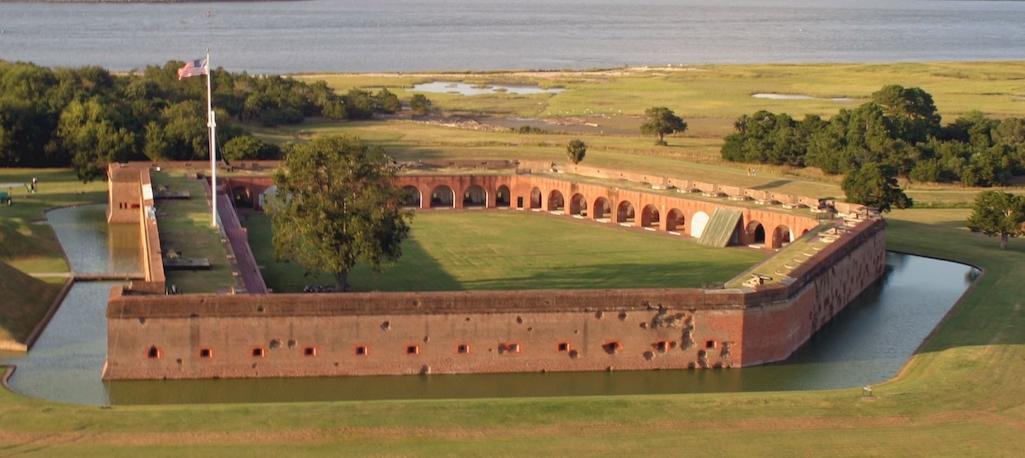
The National Park Service is seeking public comment on planning improvements for Fort Pulaski National Monument/NPS file
Sea-level rise and potent hurricanes have the National Park Service looking to strengthen its facilities at Fort Pulaski National Monument in coastal Georgia. At the same time, the agency wants to improve the visitor experience and better equip the staff.
"Without management guidance for sustainable facilities and infrastructure for continuing operations at Fort Pulaski, the park may fail to meet resource preservation obligations, visitor experience objectives, and legal commitments with partners," Superintendent Melissa Memory wrote in a letter outlining the planning process now underway.
The fort, a Civil War-era structure, resides on about 5,000 acres of "nearly pristine salt marsh on McQueen's and Cockspur islands."
The goal of the plan, which is open to public comment through July 12, is to provide visitors with an improved experience for experiencing the fort, provide living history performances that "come alive with demonstrations such as cannon firing that portray the sights and sounds of the period of significance at the fort," offer opportunities to experience the natural environments within the park, and allow visitors to "explore and find special places throughout the park for reflection and connection."
The plan also sees to protect and preserve natural resources "as much as possible from changing conditions and visitor impacts" and allow for cultural resources to "be proactively studied, protected, preserved, and rehabilitated as needed to the greatest extent from changing conditions and visitor impacts."
The Park Service also wants to ensure that the park's facilities are "sustainable and accessible, feasible to maintain, and meet visitor and operational needs in innovative and adaptive ways."
At the same time, the planning process allows the agency to address facilities that don't support current operational needs, a lack of restroom facilities, undersized septic fields, outdated communications equipment, poor staff facilities, a lack of parking space for buses and other oversized vehicles, and challenges to respond in a timely fashion after storm events that batter the park.
You can learn more about the planning process, and leave comments, at this site.



Add comment